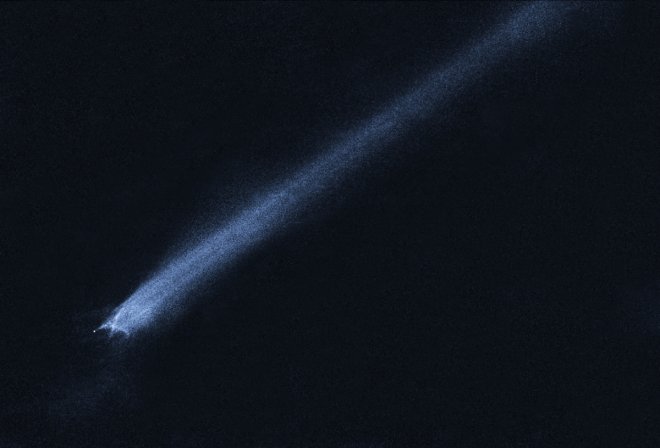
The National Aeronautics and Space Administration (NASA) said a giant asteroid, 2014 JO25, which was discovered around three years ago, will be passing by Earth on April 19. The astronomers claim that the space rock will be passing by safely and there won't be any chances of collision.
Reports said the encounter with this near-Earth object (NEO) will take place at a proximity of 1.1 million miles (1.8 million kilometres). It is equal to 4.6 times the distance between Earth and Moon.
The astronomers at Catalina Sky Survey near Tucson, Arizona first spotted 2014 JO25 in May 2014. This asteroid belongs to the Apollo group, which is a group of near-Earth asteroids.
According to NASA's NEOWISE mission, this space rock was found to be twice more reflective than Moon. Although, the orbit of the asteroid is well-known by astronomers, but, they are yet to dig out more about its physical properties.
The astronomers and researchers will get ample opportunity to witness and analyse as much as they want about the space rock on April 19, as it can be seen from a nearer distance.
The asteroid will be visible in the night sky post-April 19 after it will come close to Earth from the direction of Sun. The authorities say that small optical telescopes will be able to spot 2014 JO25 for a night or two before it goes away from Earth. The luminosity of the asteroid is estimated to increase to magnitude 11.
In the last four centuries, this latest would-be asteroid 2014 JO25's closest approach to Earth made so far and it will remain the nearest one for around next five centuries.
Astronomers say that earth is often visited by small asteroids at close proximity many times in a week. But, an asteroid as big as this one is approaching our planet so closely after asteroid Toutatis, a 3.1-mile (five-kilometre) asteroid, which passed by Earth at four lunar distances in 2004.
A similar known instance of such a huge asteroid approaching Earth will again be witnessed in 2027. The asteroid, dubbed 1999 AN10, which is half-mile-wide (800-meter-wide), will pass by at one lunar distance, ie, 236,000 miles (380,000 kilometres).
Apart from this, a comet PanSTARRS (C/2015 ER61) will also pay a visit to Earth on April 19 at a safe distance of 109 million miles (175 million kilometres). The Pan-STARRS NEO survey team had discovered the comet with the help of a telescope on the summit of Haleakala, Hawaii in 2015.
Initially, when the comet was discovered, it was very faint. But, its radiance has significantly increased as an outcome of a recent outburst, which made it seeable through small telescopes or binoculars.








